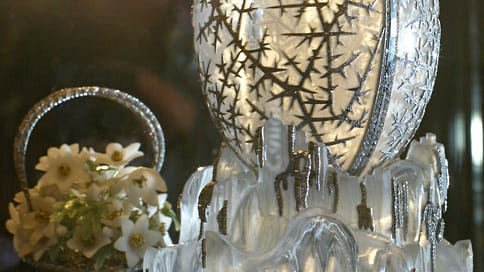A Winter’s Tale from Alma Pihl – Style
[ad_1]

One of the merits of the entrepreneur Carl Faberge, who served as a supplier to the court of His Imperial Majesty, is the established professional team of draftsmen, artists and jewelers who worked in the workshops of his company. Among them were many Russified Swedes and immigrants from Finland, which at that moment was part of the Russian Empire. Our heroine’s parents are directly connected with the Faberge house. Father Oscar Pihl was the chief master of the Moscow branch, and mother Fanny Florentina Holmström was the daughter of August Holmström, a jeweler from the St. Petersburg branch. Later, the company’s branch in St. Petersburg was headed by Albert Holmström, Alma’s uncle. In 1909, he took his niece to work as a draftswoman. By that time, Alma Theresa Piel had already turned 20, she had graduated from school with flying colors and was studying at the Baron Stieglitz School of Technical Drawing. At first, she was assigned to keep work albums: she carefully drew and described each finished Faberge item. But soon she received an offer to design jewelry. And then the first private order arrived.
Ice made of diamonds
In 1911, oil magnate Emanuel Nobel (Alfred Nobel’s nephew and longtime Fabergé client) asked for 40 brooches to be made as a gift to the wives of his company’s partners. Jewelry had to be inexpensive, elegant, original and, most importantly, different. Alma came up with a design that perfectly met the request: she used a snowflake made of silver and rose-cut diamonds as the main motif, and interpreted the frosty patterns on the glass in crystal covered with diamond frost. The customer was absolutely delighted. Subsequently, Alma Piel’s winter theme was embodied in a variety of jewelry: pendants, bracelets, necklaces, key rings with thin crystals of ice and snow. And the “snow design” itself became the calling card of Alma Pihl, the only female jeweler who was not afraid to master this purely male profession.
Winter Easter
The culmination of Alma Peel’s frosty series was the precious eggs. In 1913–1914, by order of the same Emanuel Nobel, the amazing “Ice Egg” (or Nobel Ice Egg) was created. The platinum case, approximately 7 cm high, is covered with layers of transparent and opaque enamel, creating the effect of a shimmering frosty pattern on the glass, each half of the shell is edged with pearls, and hidden inside is a crystal hour medallion inlaid with diamond frost crystals. Today the work of art is in the possession of Houston collectors Artie and Dorothy McFerrin.
A year earlier, for Easter 1913, Carl Fabergé’s firm prepared the “Winter Egg” intended for the Russian imperial family. The rock crystal case was decorated with the finest carvings imitating frosty crystals, and placed on a crystal stand in the form of melting ice. Hidden inside is a miniature basket with a bouquet of snowdrops made of quartz and jadeite. This Easter egg, by the way, is one of the most expensive: the company received 24,600 rubles for it; Nicholas II presented it to his mother Maria Feodorovna. The current owner of the priceless artifact is the Emir of Qatar.
Alma Piel designed another egg from 1914 with a magnificent mosaic of colored gemstones reminiscent of elaborate embroidery. An egg with a medallion hidden inside depicting the five children of the royal couple was presented to Empress Alexandra Feodorovna. The current owners of the relic are the British royal family.
After the revolution
Due to the tragic events of 1917, the Faberge firm was forced to close its offices and workshops. Most of the employees moved to Finland; in 1921, Alma Piel and her husband Nikolai Klee also left Russia. She first worked as an art teacher in Kuusankoski, then moved to Helsinki, where she lived until her death in 1976. She never told anyone about her brilliant career at the Faberge house and about her signature discoveries. Sketches of her winter jewelry and artifacts were purchased by the London antique gallery Wartski.
[ad_2]
Source link





